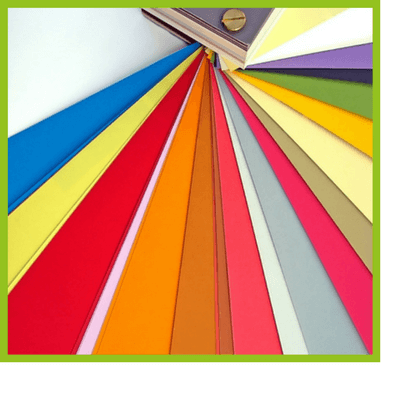Choosing the right type of printing paper is exceptionally crucial for proper printing and maintaining quality. It’s even more important because not all papers are equal, and their unique characteristics can affect the outcome of your printed project. Also, different printing technology and machines are only compatible with certain types of printing papers.
And so, we bring you an in-depth discussion on the 10 different types of paper for printing. We will also refer to the best paper product for each type so you can quickly purchase the right one. Our discussion will include luxurious cotton paper to cost-effective recycled paper. Also, you will learn about glossy, bond, satin, etc., and paper types.
Bond papers are suitable for printing business documents; fine art paper suits photography printing and glossy and matte finish papers meet different printing requirements. So, let’s dive deep into various types of printing paper.
Factors to Consider When Choosing Different Printing Paper:
Since not all printing paper types are equivalent, you need to know their differentiating factors. We will briefly review the top factors to choose from among various printing papers.
Weight and Thickness:
The weight and thickness of the paper can affect the durability, texture and feel of the printed project. Usually, papers weighing around 80GSM to 120GSM usually prefer regular printing. For higher-level, you can choose heavier papers.
Paper Finish:
The finish of the paper determines the texture, sheen, and reflectivity of the paper’s surface. You may choose from matte, glossy, or shiny paper finishes. For instance, glossy papers are ideal for wedding and event cards.
Brightness and Colour:
The brightness and colour of the paper will impact the vibrancy and contrast of the printed image. If you need printing papers for newspapers, choosing a matte finish will be better. On the contrary, burgher and vibrant papers are ideal for media printing items.
Paper Type:
You will find different types of paper, such as cotton, recycled, or fine art. They offer unique qualities that can enhance the final product. Also, it will have an impact on the printing results. So, choose the right paper type carefully, depending on your printing requirements.
Printing Technology and ink absorption:
You must know that all papers may not be compatible with certain printing technologies. So, it’s crucial to choose a paper that works well with the printer you have. Also, consider the ink absorption ability of the paper.
Some papers absorb ink better than others. It can affect the drying time and smudging of the printed image. However, too much ink absorption might increase the cost of printing.
10 Different Types of Paper for Printing:
Understanding the different types of paper for printing will help you choose the right one quickly. Also, you will know the probable budget required for the paper and printing jobs.
- Bond Paper:
Bond paper is a high-quality writing paper used for business documents. You can print letterheads, resumes, and legal documents on it. It is also known as a standard office or printer paper simply due to its applications. Moreover, bond paper is smooth and has a matte finish. It makes the paper easy to write on with a pen or pencil.
The term “bond” refers to the process used to manufacture the paper. It involves passing it through bonding rollers to create a smoother surface. The bond paper is made from wood pulp or cotton fibres. It weighs 16 to 32 pounds. Regular printing paper has 20 to 24 bond weight as standard.
You may choose the Southworth Quality Bond Paper. It comes in a package of 500 paper sheets and has 8.5” x 11” size. It weighs 20 lb/75 GSM, ideal for printing on digital machines.
Product Features:
- Standard size and weight
- Regular finish
- Acid- and lignin-free
Pros:
- High-quality and professional appearance
- Suitable for use with laser and inkjet printers
- Resistant to ink smudging and bleeding
Cons:
- Not suitable for printing images or photographs
- Limited availability of colours and textures
- Glossy Paper:
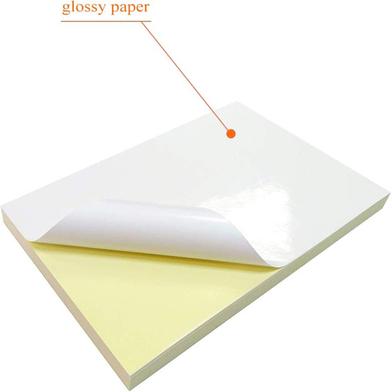
Glossy paper is a type of coated paper with a shiny finish. It is commonly used for printing high-quality photographs, brochures, and flyers. The coating on the paper gives it a reflective surface to enhance the colour and detail in printed images.
The coating can be of regular plastic ones or natural additives. So, you must choose glossy paper with a suitable layer for your printing jobs. You will find glossy paper in different styles, such as regular ones, glossy photo papers, etc.
For instance, Amazon Basics Glossy Photo Paper can be perfect for printing photos, images or documents. It has three different sizes available, and each pack contains 100 papers. Its non-tacky finish enhances the printing details beautifully and resists image smudging.
Product Features:
- High-quality glossy finish
- Has beautiful details
- Stops image smudging
Pros:
- Produces high-quality, vibrant images
- Offers a professional appearance for marketing materials
- Available in a range of sizes and weights
Cons:
- Susceptible to fingerprints
- It may cause glare when viewed under bright lighting
- Not suitable for printing text-heavy documents
- Matte Paper:
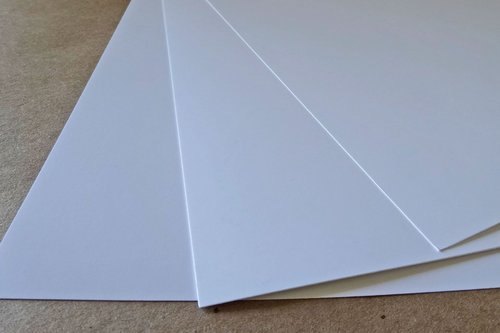
Matte paper also has a coating, but unlike glossy paper, it has a non-glossy, flat finish. You will commonly see its uses in printing documents for a professional appearance. So, it is typically used to print reports and presentations.
Unlike glossy paper, matte paper does not reflect light, thanks to its anti-glare finish. Thus, it is easier to read in various lighting conditions.
HP Enhanced Business Paper will be an excellent choice if you need high-quality printing. It comes in a pack of 150 papers and features 8.5×11 inches in size, which is perfect for A4 printing. The paper works well both with PageWide and Inkjet printers. So, you don’t need to worry about the type of printer you have for printing on these papers.
Product Features:
- It has an 8.5×11 inches size
- Compatible with most printers
- Perfect matte finish for increased details
Pros:
- It provides an anti-glare look for a better appearance
- The low-reflective surface is easy to read
- Available in a range of sizes and weights
Cons:
- Produces images with less vibrancy compared to glossy paper
- Not suitable for printing high-resolution photographs
- It may appear dull or lacklustre in some applications
- Photo Paper:
As the name suggests, photo paper is specially designed for printing high-quality photographs. You will find it in glossy, matte, satin, and pearl finishes, each with unique characteristics. It typically weighs 170-300 grams per square meter (GSM).
Also, it is compatible with inkjet printers. Photo papers produce high-quality images with full-colour details and accuracy to maintain vibrancy. For instance, HP Everyday Photo Paper has a perfect glossy finish for producing vibrant, bright and detailed photos. It has 4×6 inches in size. Also, it enjoys FSC certification for recycling facilities. The paper has quick-dry features to keep the printed images ready from the printer.
Product Features:
- Highly-affordable photo papers
- Results in vibrant and bright images
- FSC-certification and recyclable
Pros:
- High-quality, vibrant images with sharp details
- Available in different finishes and weights
- Resistant to fading and smudging
Cons:
- Expensive compared to other types of paper
- Not good for printing text-heavy documents
- Cardstock:
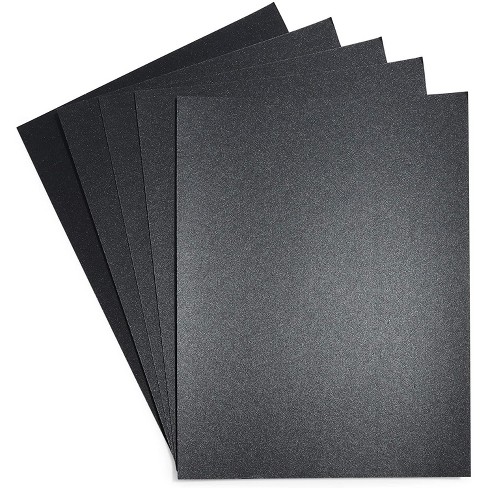
Cardstock is a heavyweight paper. It weighs around 147GSM to 640GSM, which is almost 3X more than different types of paper for printing available generally. You will see it for printing business cards, invitation cards, postcards, scrapbooking, etc.
Moreover, it is sturdier than regular paper. Cardstock is available in various colours, textures, and finishes, including matte, glossy, and metallic. So, depending on your printing requirements, you can choose the right finish too.
The Neenah White Index Cardstock with 300 counts of sheets and 8.5″ x 11″ is an affordable option. Its 199GSM weight makes it heavier and more durable too. Its smoother textures support bleed-free printing. You can print on both sides, enhancing its affordability further.
Product Features:
- Heavier 199GSM weight
- Smooth texture for easy printing
- Bleed-free printing on both sides
Pros:
- It has a sturdy and durable base for printed materials
- Available in many colours, textures, and finishes
- Suitable for printing both text and images
Cons:
- Not ideal for use with most home printers due to its thickness
- Limited availability of sizes
- Cover Paper:
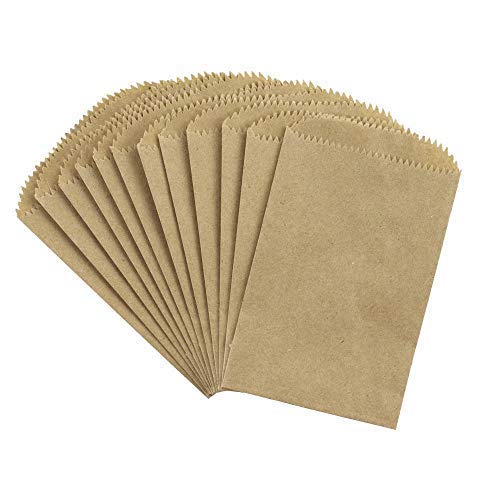
Cover paper is similar to cardstock but is thicker and heavier. The thick and heavyweight paper is often used for book covers, brochures, and menus. Also, the cover paper has various weights. You will find it between 135GSM to 300GSM weight, slightly thicker than the cardstock papers.
It is available in different finishes, including matte, glossy, and textured. Hammermill Printer Paper is an affordable cover paper choice for brochures, book covers, full-colour presentations, etc. It supports 15 pastel colours for high-quality and vibrant printing. Initially, it is available in standard 8.5×11 size, but you may also get 12×18, 19×13 and ledger sizes for your printing requirements. Also, it has a super-bright finish for perfect highlights of your printed texts and images.
Product Features:
- Available in four different sizes and finishes
- Vibrant and highly bright printing results
- USA-Made with approval from Forest Stewardship Council (FSC)
Pros:
- It provides a heavy-duty, durable surface
- Available in a range of weights and finishes
- Can print both text and images
Cons:
- Limited colours compared to cardstock
- More expensive than regular paper or cardstock
- Vellum Paper:

Vellum paper is a translucent paper that can be used for crafts and overlays. Plus, you can use it to add a unique texture to printed materials. It is available in various weights and finishes. Typically, modern-day vellum paper is made from synthetic plant materials. So, it is eco-friendly.
You will see vellum paper’s application for blueprints, technical drawings and building and structural plans. Neenah Exact Vellum Bristol features 250 sheets per count and 94 brightness levels. So it can highlight the printed images with excellent clearance in all lighting conditions. It comes in the standard 8.5 x 11 Inches size and is acid and lignin-free for longevity.
Product Features:
- Uncoated and smooth paper finish
- Hassle-free printing performance
- Compatible with most printers and copiers
Pros:
- Unique, translucent appearance
- It can be used for overlays or adding texture
Cons:
- Not suitable for printing text
- It can be not easy to read when overlaid on top of text or graphics
- Cotton Paper:
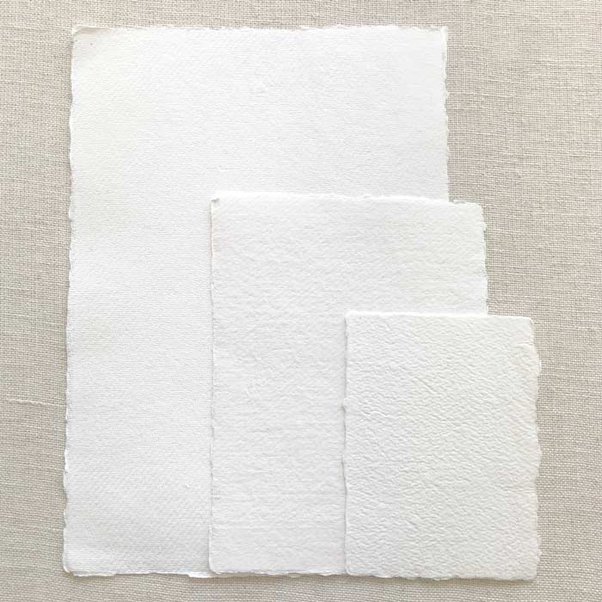
Cotton paper is a high-quality paper made from 100% cotton fibres. It has a luxurious feel and texture, making it perfect for printing documents with a professional or elegant touch.
Moreover, the cotton paper is known for its durability and strength. Thus, it is famous for printing essential documents such as resumes, business cards, and wedding invitations. Also, most legal and banking documents are written and printed on papers with higher-level of cotton. It ensures durability and finer texture.
The Southworth 100% Cotton Business Paper includes 250 sheets in each pack. It has a 100% cotton construction which provides it with a crisp texture for an elegant finish. Also, its wove finish is long-lasting without any damage. You can use it with traditional laser copiers, inkjets and laser printers.
Product Features:
- 100% cotton construction ensures a luxury finish
- 8.5” x 11″ size and 120SM weight
- Professional and standard quality for printing
Pros:
- High-quality and luxurious feel
- Durable and strong
- Acid-free, and so won’t yellow or deteriorate over time
- Resistant to water and tearing
Cons:
- Expensive than other types of printing paper
- Not suitable for high-volume printing jobs due to the cost
- Recycled Paper:
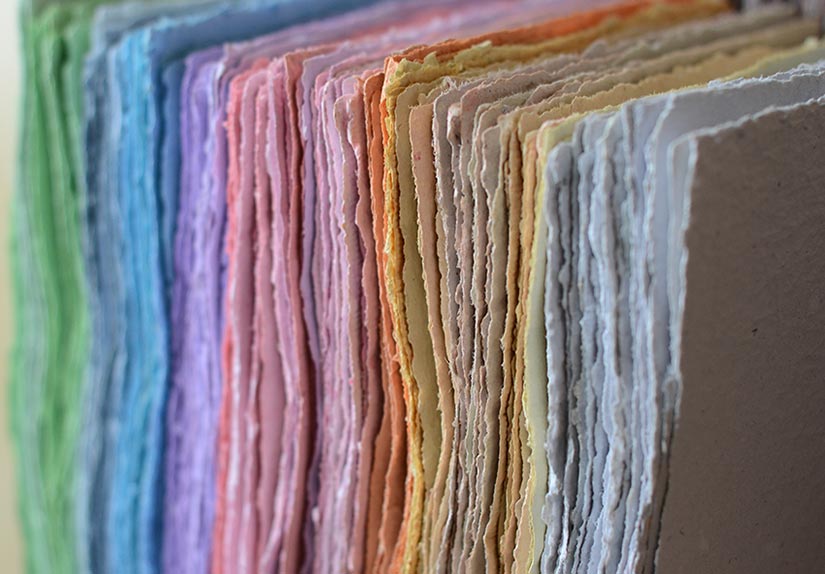
Recycled paper is particularly any specific type of printing paper. Instead, it is made from recycled materials such as old newspapers, magazines, and cardboard and can be of different types. It is an environmentally-friendly option to reduce waste.
Many industries these days use recycled printing papers to conserve natural resources. Recycled paper can vary in quality and texture. It mainly depends on the type and amount of recycled materials used in production.
PrintWorks 100 Percent Recycled Paper is a great choice regarding this. It has FPS certification, which means it has been examined for making from 100% recycled items. Also, it is a multipurpose paper, so you may use it for printing texts, images and photos.
It has been mainly recycled from food and beverage containers. Also, with 92GSM weight, it is compatible with most standard printers and copiers.
Product Features:
- 100% recycled printing multipurpose paper
- High-quality construction with different finishes
- Affordable and an excellent choice for bulk order
Pros:
- Environmentally-friendly
- Cost-effective
- Available in various textures and finishes
Cons:
- Lower quality compared to other types of paper
- It may have a rough texture or uneven colour
10. Fine Art Paper:
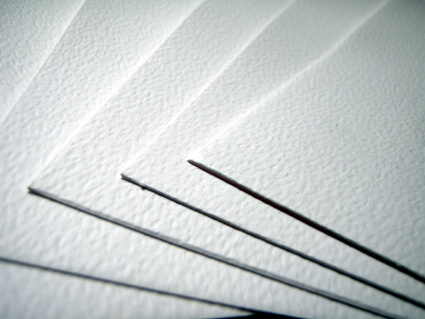
Fine art is a high-quality paper designed to print fine art prints and photographs. It has a smooth finish as it is usually made from wood pulp or cotton fibre. You may, however, see it with velvet construction too.
Thus, fine art paper can enhance the colour and detail of printed images. As a result, it makes the printed images and texts look more vibrant and detailed. Often, it has an acid-free base to ensure maximum durability of the printed images and texts.
For instance, Epson Velvet Fine Art Paper features an acid-free base and museum quality to offer the best quality printing results. The white surface is bright enough to accentuate details with the finest output on most printing machines. Also, it has been made from 100% cotton rag. So, it is ideal for any archiving jobs in future.
Product Features:
- Museum-quality manufacturing quality
- Acid-free construction ensures longevity
- Best for preserving ancient arts and texts
Pros:
- Excellent colour reproduction and image detail
- Available in many finishes and textures
- The acid-free design saves it from yellowing over time
Cons:
- It may not be suitable for high-volume printing jobs due to the cost
- Not compatible with all printers
| Type of Paper | Finish | Texture | Ideal For |
| Glossy Paper | Shiny | Smooth | Printing photos and graphics that require vivid colours and high contrast. |
| Matte Paper | Non-glossy, flat | Smooth or lightly textured | Best for brochures, flyers, newsletters, art prints, drawings, and watercolour artworks. |
| Bond paper | Slight sheen | Smooth | Striking a balance between glossy and matte finishes, it produces vibrant colours with moderate reflection and glare resistance. |
| Cardstock | Various finishes | Lightly textured | It has rich colours with low glare and high contrast, making it ideal for printing wedding, event, and occasion cards. |
| Fine Art Paper | Soft, tactile texture | Textured | Heavyweight, acid-free paper made of natural fibres enhances the depth and richness of printed artworks, such as paintings, drawings, and photographs. |
| Vellum Paper | Textured surface | Canvas-like | It is ideal for printing digital reproductions of oil paintings, acrylics, and other fine art. |
| Cover paper | Shimmering, reflective finish | Smooth | Best for printing high-end book covers, documents, presentations, etc. |
| Cotton Paper | Unique texture and durability | Textured | Producing archival-quality fine art prints, limited edition prints, and museum-quality reproductions that require longevity and stability. |
| Photo Paper | Has different coating | Smooth or lightly textured | It produces sharp, vibrant colours. Ideal for printing photos and other marketing materials. |
| Recycled paper | Smooth surface | Smooth | Produced from recycled materials and can be of different purposes and materials. |
Buying Guide for Various Types of Printing Paper:
You should consider several important factors when buying various types of paper quality for printing. It will help you quickly find the right printing paper within your budget. Also, it will ensure better printing output with a higher level of clearance and vibrancy.
Paper weight:
The weight of the printing paper is measured in grams per square meter (GSM). It determines how thick and sturdy the paper is. For most everyday printing needs, you can choose a paper weight of around 80-90GSM.
If you want to print high-quality images or photos, consider heavier-weight paper. For this, 120GSM to 150GSM papers will work better.
Paper brightness:
Paper brightness refers to the amount of light the paper’s surface can reflect. A higher brightness level results in sharper and more vibrant printed colours. Conversely, lower brightness will result in dull texts and images.
You should look for paper with a brightness rating of 90 or above. For instance, Southworth 100% Cotton Business Paper has a 100% brightness level for the best viewing experience.
Paper finish:
The finish of the paper will affect the quality of the printed image. Glossy paper is preferable for printing photos. On the other hand, you may choose matte paper for text-heavy documents. Next up, semi-gloss and satin finishes are a good compromise.
Printer compatibility:
You must ensure that the paper you choose is compatible with the printer. Some printers may have limitations on the types of paper they can use. Thus, check the paper’s printing technology and compatibility to ensure hassle-free applications.
Acid-free and environmental considerations:
Do you plan to print documents or images that need to last a long time? If so, look for acid-free paper. Acid and lignin-free paper is treated to prevent aging and deterioration over time. Also, it won’t turn yellow over time.
Lastly, consider if environmental sustainability is essential to you. Then, you may look for paper made from recycled content. Or it may have certification from organizations such as the Forest Stewardship Council (FSC).
Frequently Asked Questions:
- What is glossy paper, and when should I use it?
Glossy paper has a shiny finish that reflects light and produces high-contrast images with vivid colours. It is ideal for printing photos and graphics that require sharpness and clarity.
- What is lustre paper, and when should I use it?
Luster paper has a pearl-like finish. It combines the properties of glossy and matte papers. So, it produces rich colours with low glare and high contrast. As a result, it is suitable for printing portraits, landscapes, and still-life photographs.
- What is laser paper?
Laser paper is a type of paper specifically designed for use with laser printers. It has a smooth surface that allows the toner to adhere quickly and produces crisp, clear text and images. You can print business documents, reports, and other text-based materials more clearly and sharply.
Conclusion:
You may need different types of paper for printing various documents and images. This guideline on printing paper types will help you quickly determine which paper you need. The key is to decide your printing requirements and budget. Then, you can choose the right printing paper without any hassles.
Moreover, focus on choosing acid-free printing papers with slightly increased thickness. It will ensure long-lasting printing results at an affordable price. Lastly, ensure you also have a good printer, copier and inks for the best printing results on whatever paper you have.

